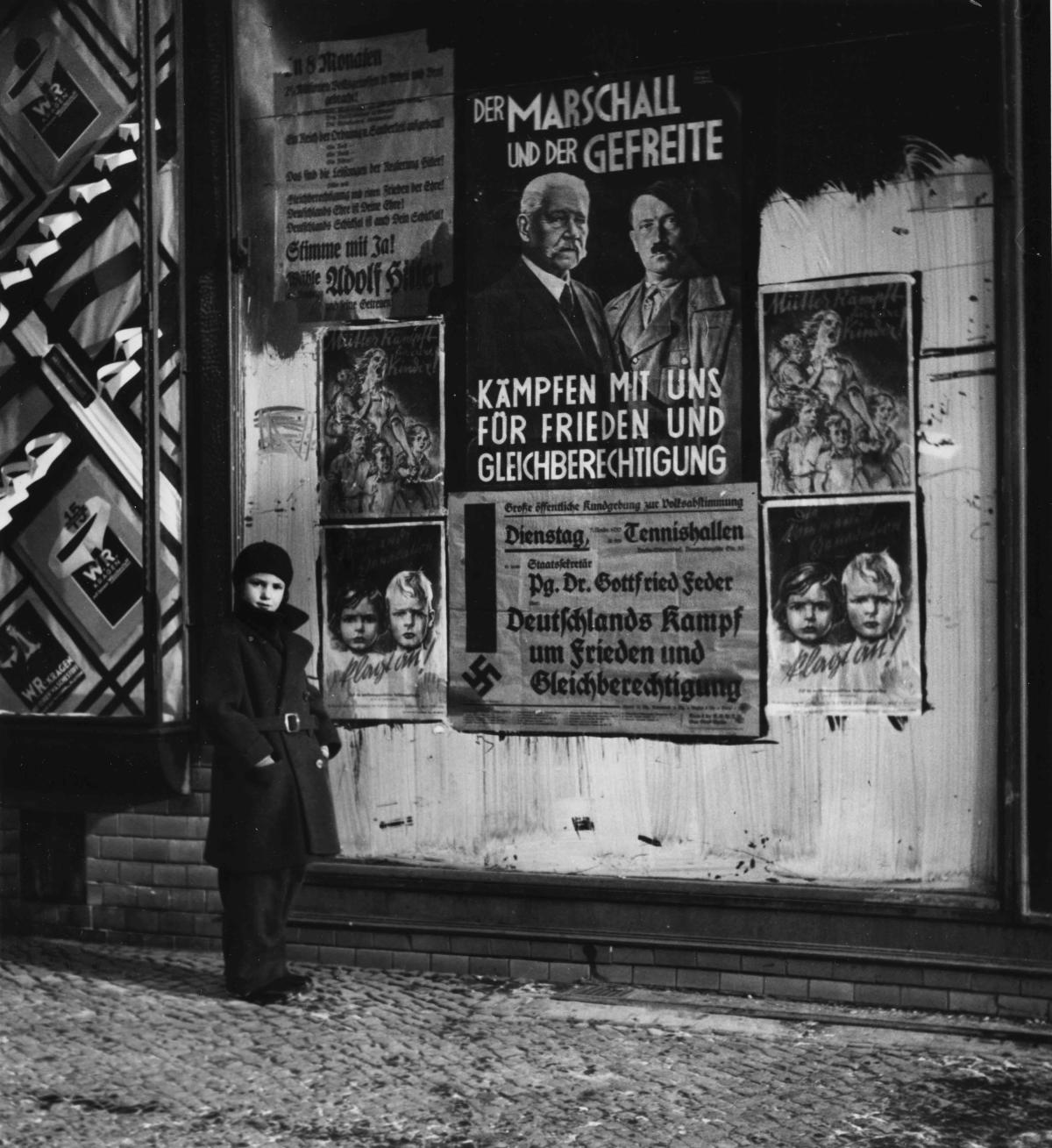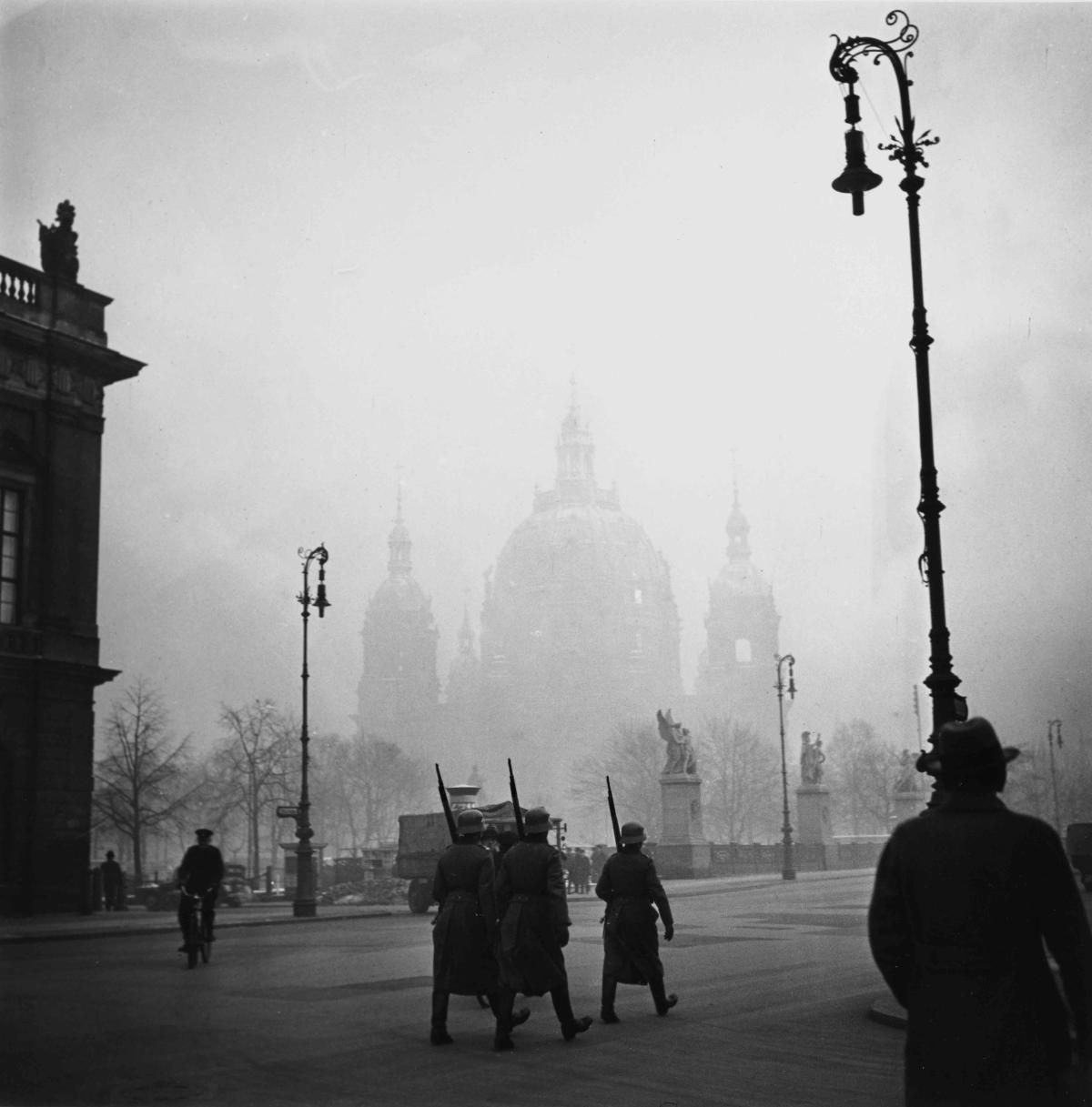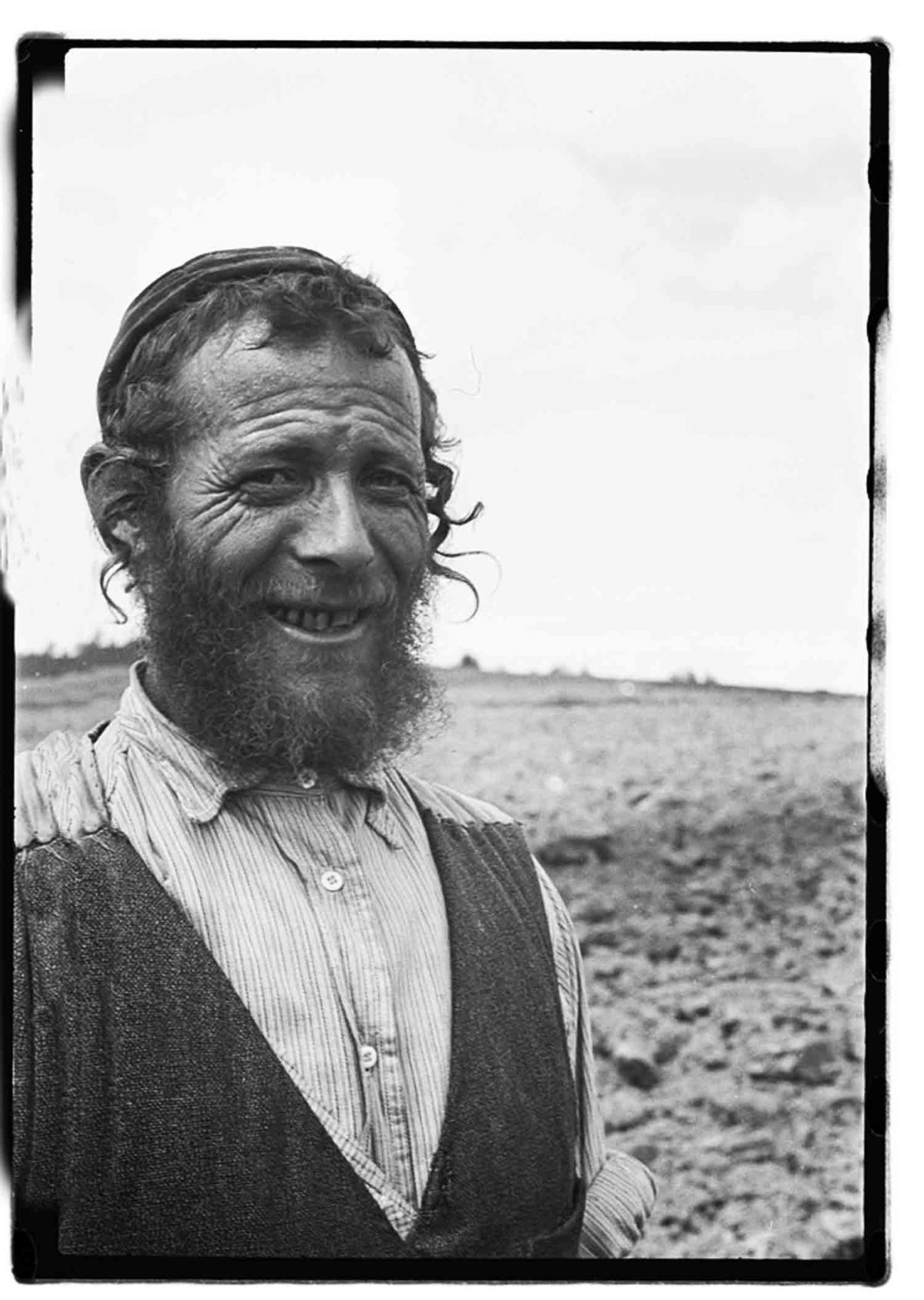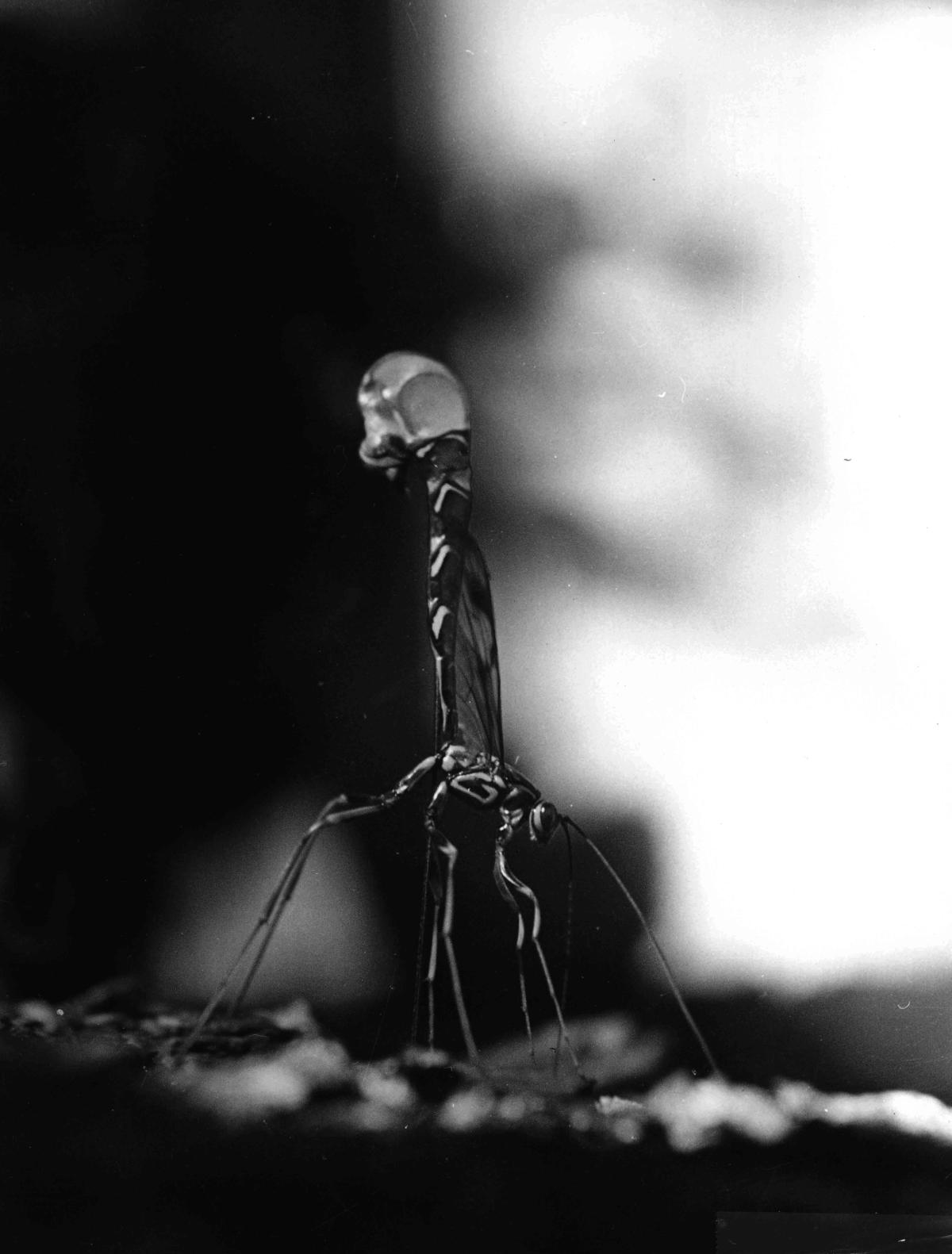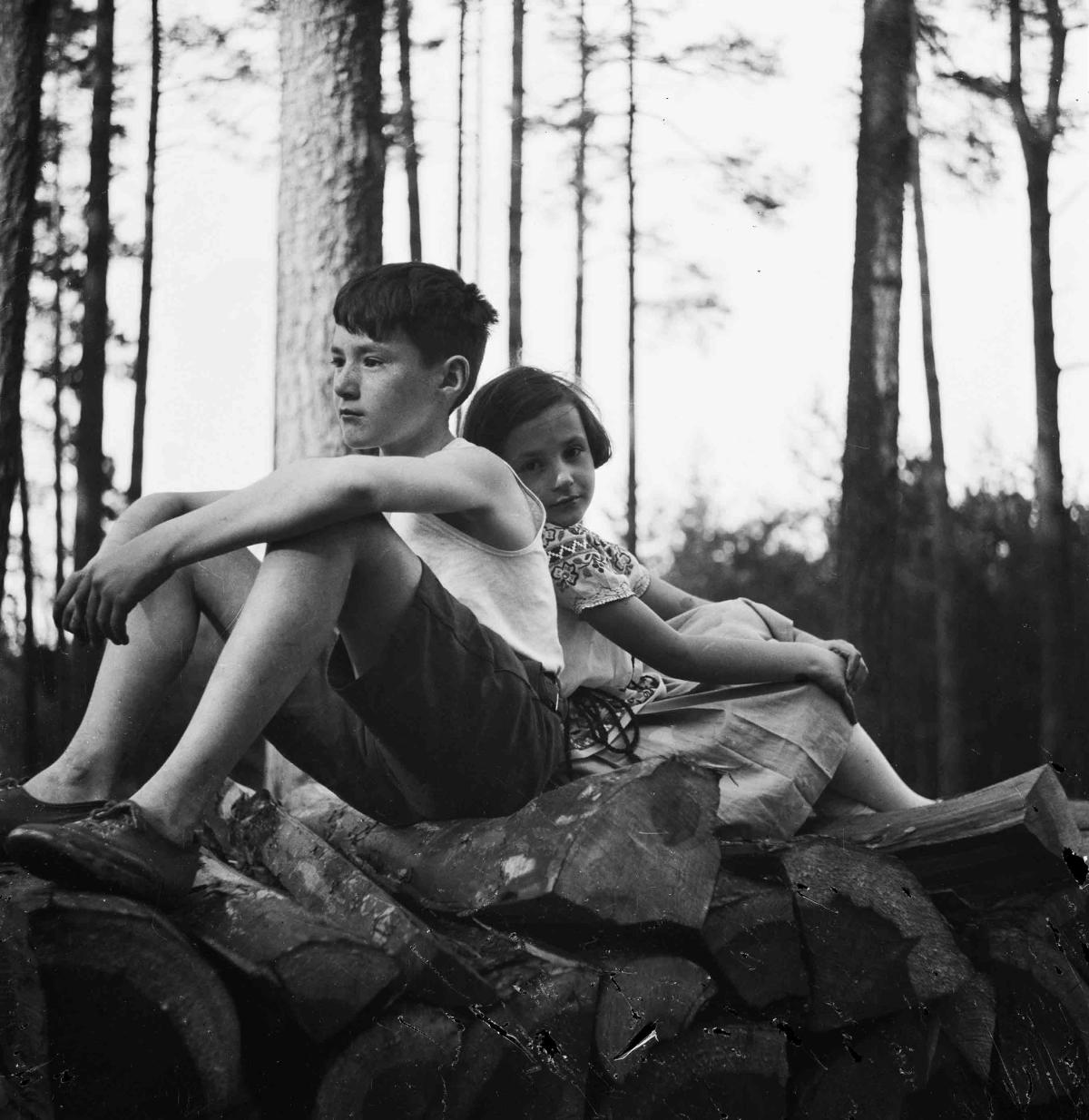The first image the reader sees upon opening Roman Vishniac’s 1983 book, A Vanished World, is a black-and-white photograph of a kerosene lamp. The lamp, mounted on a wall, throws only a feeble amount of light. But that there was any light at all was the point. As Vishniac explained in the book, the image signified “a torch burning in memory of the six million martyrs.”
Vishniac, who died in 1990, was among the most inspiring, influential, and enigmatic chroniclers of Jewish life in the days when European anti-Semitism took its tragic turn into the Holocaust. During the mid- and late 1930s, the Russian-born photographer traveled throughout Eastern Europe, determined to document the region’s cities, shtetls, shuls, and farms as their occupants’ lives became increasingly constricted. His photographs stand as a testament to the lives that were at best permanently disrupted and at worst ended in Nazi concentration camps, and today selections of his work are part of a permanent exhibit at the United States Holocaust Memorial Museum.
So A Vanished World is a bittersweet book—it overflows with the joy of community while presaging its erasure. Vishniac photographed merchants and customers casually strolling on a Vienna street and a rabbi huddled over the kabbalah in Krakow. He shot porters wearily carrying loads on their back through Warsaw and boys playfully gathering outside a shul in Mukachevo. As Vishniac’s travels extended into the late ’30s, such street scenes depicting the bustle of Jewish life would be tempered by photos of children begging in the streets, of families in hiding, crammed into dank basements.
The book made Vishniac famous, and an essential figure in the documentation of the Holocaust. But the book has also done him something of a disservice, says Laura Bialis, the director of Vishniac, a new documentary about the photographer. Vishniac’s interest in Jewish life extended well beyond the years of the Holocaust; he was a skilled photographer in a variety of modes, from black-and-white modernism to colorful microphotography. A broader understanding of his work has emerged in the past decade, as scholars and archivists have deeply explored his legacy of more than 30,000 photographs. But questions have emerged as well. What was his motivation to head to Eastern Europe? How much can we trust the often-dramatic captions he applied to his photos? How should we look at him now?
“I’ve gone through thousands of his images over and over and over again on a hard drive,” says Bialis. “And I’m still just as stunned by that as I was the first day I opened that hard drive. There’s an artistic component to his work that gets neglected. I feel like he still needs to have his day in the sun.”
He started out as the son of a rich man, tinkering. Born in 1897, Roman Vishniac grew up in Moscow, where his father was the well-off head of an umbrella manufacturer. The microscope he received as a child fueled an early interest in biology (he’d eventually earn a doctorate in the field); the camera he received for his seventh birthday stoked a lifelong obsession with photography. In short order he combined the two, attaching the camera to the microscope and taking pictures of the insects and tiny organisms he found while exploring nature.
The Vishniacs were not an unusually pious family. Bialis, who interviewed Vishniac’s daughter, Mara Vishniac Kohn (who died in 2018), for her documentary, recalls that “the way she describes it is that they were like a very involved Reform family. They did all the holidays, Passover and things like that.” But the Vishniacs were not immune to the anti-Semitism that chased many Jews out of Russia amid the Bolshevik Revolution, and by 1920 the family had fled to Berlin.
Vishniac married and soon had two children: a son, Wolf, followed by a daughter, Mara. Vishniac photographed his children often on family trips, invited them into his laboratory, and encouraged their interest in science. Mara would later marry a Nobel Prize-winning physicist, Walter Kohn, and Wolf would grow up to become a microbiologist; he died in 1973, falling in a crevasse in Antarctica on a research trip. Throughout their childhoods, Vishniac would regale his children with stories about his life—claiming to have fought against the Red Army, for instance. “You couldn’t really be absolutely sure ever about his experiences, because they might well be embroidered a bit,” Mara recalls in the film.
His passion for photography was never in doubt, though, and amid the laissez-faire culture of Weimar Berlin, Vishniac developed a style that put him in line with the modernist ferment of the moment. His new photos were shadowy, ironic, noirish; a shot of travelers in a railway station near Potsdamer Platz could be a still from The Third Man. But he was also open to a certain playfulness. A 1926 photo, which he captioned “The dog cannot be convinced,” shows a woman on a Berlin sidewalk struggling to tug a recalcitrant dog forward on its leash. A photo of polar bears at the Berlin Zoo was shot from above, as if the bears were the spectators instead of vice versa. “People behind bars,” he captioned it.
“It was claustrophobic in Moscow, because in Moscow the Vishniacs were not allowed to participate as much in mainstream life. But Berlin at the time was wide open,” Bialis says. “It was incredibly liberating for him to come to Berlin and sort of forget that he was Jewish.”
That moment wouldn’t last. As Hitler rose to power in the early 1930s, Vishniac began to pursue his photography more surreptitiously. He would photograph the Nazi propaganda posters that had sprung up around Berlin, often asking young Mara to pose in front of them, the better to fend off questions from suspicious authorities. “He would put me there and take my picture, and I just thought that was silly,” she recalls in the film. “In this manner, he could always say, ‘Oh I’m taking a picture of my little girl.’”
Vishniac’s subject matter in Berlin rapidly became more serious: election posters supporting Hitler; soldiers marching through the streets; a racist, pro-Aryan phrenology display. “In my opinion, that’s how he started getting involved in taking these photographs of the Jewish experience—first in Berlin, and then going to Eastern Europe,” Bialis says.
It was a trip that would change not just his photography but his life and the wider world’s understanding of the depth of the horrors of the Holocaust.
He began in Berlin, photographing the soup kitchens, hospitals, Zionist training camps, and other support groups for Jews who were increasingly oppressed by the Nazi regime. In 1935, he made the first of many trips east, first to Poland to record the lives of Jews there. “Was it insane to cross into and out of countries where my life was in danger every day?” he writes in A Vanished World. “Whatever the question, my answer was the same: It had to be done. I felt that the world was about to be cast into the mad shadow of Nazism and that the outcome would be the annihilation of a people who had no spokesman to record their plight.”
Much of what he photographed in Warsaw, Lodz, Lublin, and elsewhere were snapshots of everyday street life: newsstands, produce stands, a barber, and the ubiquitous porters carrying goods on their backs across town. But he also captured the intensifying restrictions that would segregate Polish Jews into ghettos and force families into hiding: vandalized storefronts, rail-thin children, families hiding in basements. One photograph depicts the entrance of one such dwelling that Vishniac said housed 26 Jewish families. The image is barely much beyond a jet-black square. He’d distilled ironic, shadowy modernism into a stark, bleak assertion of nothingness.
Vishniac’s travels between the cities and shtetls and Berlin were subsidized by the American Jewish Joint Distribution Committee (JDC), which sought images that it could use as fund-raising materials to encourage Americans to respond to the plight of Jews in Eastern Europe. It is an open question whether the JDC commissioned Vishniac in the first place, or if the organization was so taken with early photos Vishniac said he took on as “an assignment from God.” Bialis’s documentary quotes the first mention of Vishniac in the JDC’s correspondence files, a memo dated October 14, 1947, stating that Vishniac had shared “the most extraordinary set of photographs narrating in pictorial form the work of the JDC. They are the best photographs of their kind that I have seen. . . . He is an expert photographer, has ideas, is enthusiastic about the work, and for our purposes is a real friend.”
To Bialis, the memo demonstrates that Vishniac pursued the photographs on his own initiative, at least at first, though some scholars dispute the point. Regardless of the timing and Vishniac’s motivations, the JDC would prove crucial to Vishniac, not just to support his photography but his family, helping him receive visas that would help his wife and children escape Nazi Berlin in 1940 and eventually settle in New York City. (Vishniac himself was briefly held in a French deportation camp by the Vichy government prior to the move.) Once in New York, he would have to start a new life, in a place where he struggled to draw attention to his efforts on behalf of European Jews.
“He believed that pictures of the endangered communities might, even then, focus American attention and prevent further catastrophe,” Mara once wrote. “But as we know, it took many years before we were willing to confront the awful truth.”
His English was poor, but in New York he hustled. He made ends meet as a portrait photographer, shooting performers and artists like Marc Chagall; in 1942, unannounced, he visited the Princeton, New Jersey, home of Albert Einstein, cajoling him into sitting for what would become one of his best-known portraits. But his efforts to draw more attention to his Eastern European photographs were often in vain. He wrote letters to President Franklin Delano Roosevelt in a failed attempt to have him acknowledge his photographs of the Jewish communities that had become devastated; a 1947 collection of his photographs, Polish Jews, drew only modest interest.
As his portrait photography business struggled, he pivoted back to his childhood interest in nature. He taught biology and photography at New York colleges and, in the ’50s and ’60s gained fame for his microphotography—high-resolution shots of live insects and colorful images of amoebas and protozoa and human tissue filled the pages of magazines such as Life and Boys’ Life.
Those images helped Vishniac become an in-demand public speaker. In the film, Mara says he was often prone to overstatement about his accomplishments, from the number of languages he knew to the number of times he was arrested during the war. When interest in Vishniac’s 1930s photography revived, first through a 1971 exhibition at New York’s Jewish Museum and eventually in the publication of A Vanished World, Vishniac’s descriptions of what he’d photographed drew similar scrutiny. The book’s editor, Michael di Capua, told the New York Times that Vishniac was “telling stories that were better than what really happened.” Was the rabbi in this photo truly heading to a family sitting shiva? Did the people in that photo actually perish in the camps like Vishniac said they did? To sidestep such unanswerable questions, di Capua segregated Vishniac’s commentaries from the photos themselves. “If I could keep that baloney away from the pictures, at least that would solve something,” he told the Times.
Bialis says that “the captions are sometimes correct, sometimes not,” noting that the kind of rigorous standards of accuracy among photojournalists hadn’t been established at that point. (For instance, Weegee, perhaps the best-known urban photojournalist of the ’30s and ’40s, was not above staging his shots.) “One of my favorite quotes from Mara is, ‘It turns out that some of my father’s stories were true,’ and that is how I look at A Vanished World,” Bialis says.
Mara donated Vishniac’s collection to the International Center for Photography in 2013, and in 2018 it moved to the Magnes Collection of Jewish Art and Life at the University of California, Berkeley. The Magnes has been sorting, digitizing, and organizing the archive in the years since, and Bialis says much more remains to be discovered about his life and art.
“There’s an opportunity there for people to look at aspects of his work that have never really been studied and written about,” Bialis says. “I always tell people that my film is not a Holocaust film. His photos are just so captivating. There’s something about the way he’s able to capture people. The way they’re looking at him, the way they interact with him. There’s an important memory component to his work. But there’s also an artistic recognition component.”


